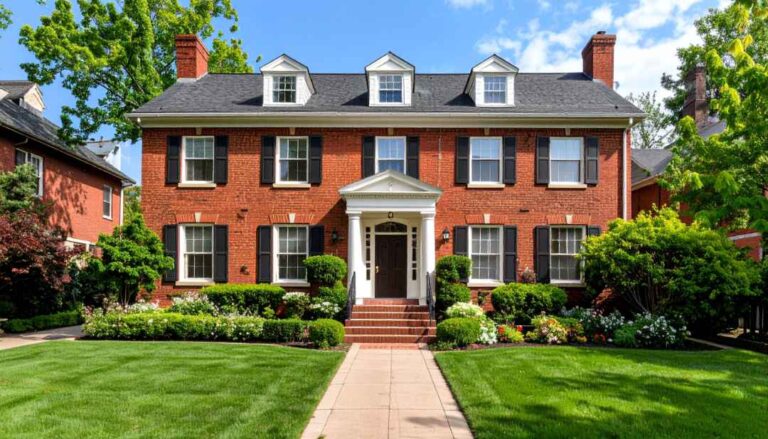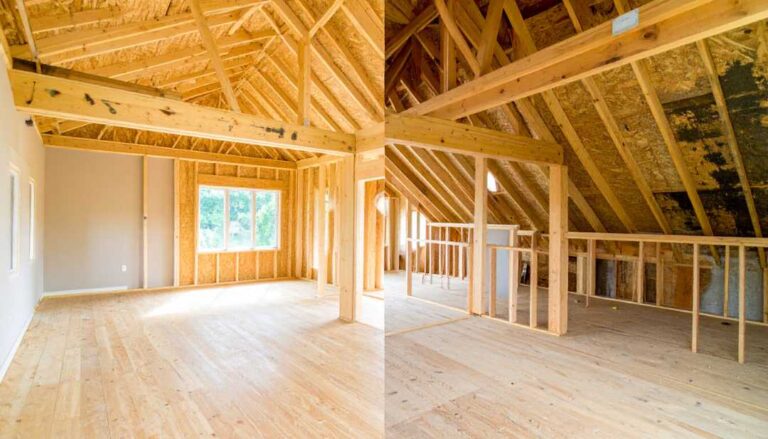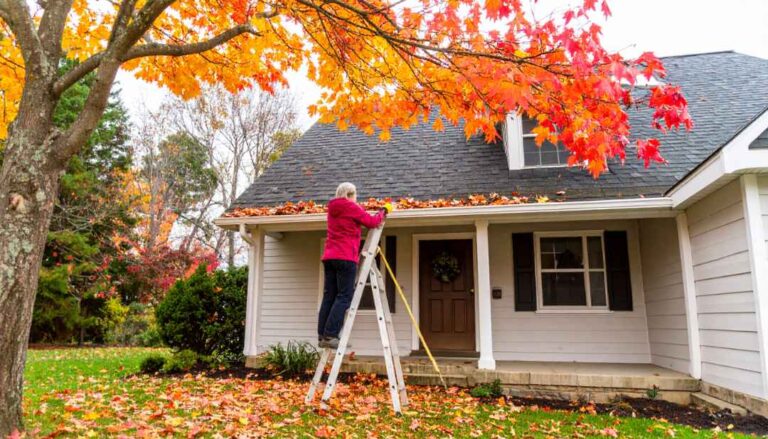Your roof. It’s more than just a collection of shingles and underlayment; it’s your home’s primary line of defense against the unpredictable Illinois weather. From scorching summer sun to icy winter blizzards and fierce spring storms, your roof endures a constant barrage of environmental stressors. As a homeowner, understanding the health of your asphalt roof isn’t just about curb appeal; it’s about protecting your most significant investment, ensuring the safety of your family, and avoiding costly interior damage.
At Seidel Exterior Group, we’ve been serving Illinois homeowners for years, providing expert roofing solutions that stand the test of time. We understand the unique challenges our local climate presents to roofing systems. While asphalt shingles are renowned for their durability and cost-effectiveness, even the best roofs have a lifespan. Recognizing the early warning signs of a failing asphalt roof can save you thousands of dollars in repairs and prevent more extensive issues down the line. Don’t wait for a leak in your living room to realize there’s a problem! This comprehensive guide will equip you with the knowledge to identify seven critical warning signs that indicate your asphalt roof may be nearing the end of its service life or requires immediate attention.
1. Missing or Damaged Shingles: The Obvious Red Flag
Let’s start with the most apparent sign of trouble: missing or visibly damaged shingles. High winds, hailstorms, and even strong gusts can rip shingles right off your roof, leaving exposed areas vulnerable to water infiltration. But it’s not just about missing pieces. Look closely for:
- Cracked Shingles: Asphalt shingles can crack due to age, extreme temperature fluctuations, or impact from hail. These cracks create direct pathways for water to seep into the underlying layers.
- Curling or Cupping Shingles: This is a classic sign of aging and moisture damage. Shingles may curl upwards at the edges (cupping) or along the bottom (curling) as they lose their protective granules and become brittle. This not only compromises their ability to shed water effectively but also makes them more susceptible to wind uplift.
- Buckling Shingles: Buckling occurs when shingles ripple or wave, often due to improper installation, inadequate ventilation in the attic, or structural movement. This creates stress points and can lead to cracking and premature wear.
- Blistering Shingles: Small, raised bubbles on the surface of shingles indicate moisture trapped within the shingle material. While not always an immediate crisis, widespread blistering suggests the shingles are deteriorating and losing their protective properties.
If you spot any of these issues, especially after a severe weather event, it’s crucial to contact a professional roofing contractor for an inspection. Ignoring these seemingly minor problems can lead to significant water damage, mold growth, and compromised structural integrity.
2. Granule Loss: Your Roof’s “Sunscreen” is Wearing Off
Those tiny, gritty bits on your asphalt shingles aren’t just for decoration; they’re critical for protecting your roof from the sun’s harsh ultraviolet (UV) rays. Think of them as your roof’s sunscreen. Over time, and especially as shingles age, these granules naturally start to detach. You’ll often find them accumulating in your gutters or at the bottom of your downspouts.
While some granule loss is normal, excessive amounts are a serious warning sign. When shingles lose their granules, the underlying asphalt is directly exposed to UV radiation, accelerating its deterioration. This leads to the asphalt becoming brittle, cracking, and losing its waterproofing capabilities much faster. If you notice large piles of granules in your gutters or bald spots on your shingles where the asphalt is visible, your roof’s protective layer is significantly compromised, and it’s likely time for a replacement.
3. Dark Streaks or Algae Growth: More Than Just a Cosmetic Issue
Do you see unsightly black or green streaks running down your roof? This is likely Gloeocapsa magma, a type of blue-green algae that thrives in humid environments. While primarily a cosmetic concern in its early stages, extensive algae growth can indicate a deeper problem and contribute to accelerated roof deterioration.
Algae retain moisture, keeping the shingle surface damp for longer periods. This constant dampness can encourage the growth of moss and lichen, which are even more problematic. Moss and lichen have root-like structures that can lift shingles, trap even more moisture, and eventually damage the underlying roof deck. Furthermore, these growths can also feed on the limestone filler in asphalt shingles, leading to granule loss and premature aging. While power washing can temporarily remove these growths, it’s not recommended as it can damage the shingles. If these dark streaks are widespread and persistent, it’s a sign that your roof’s natural defenses are weakening, and it might be a good time to consider a professional roof cleaning or assessment.
4. Sagging Roof Deck: A Structural Nightmare
This is perhaps one of the most alarming warning signs and indicates a severe problem that requires immediate attention. If you notice any sagging or drooping in your roofline, whether from the exterior or from within your attic, it’s a critical structural issue.
A sagging roof deck can be caused by several factors, including:
- Water Damage: Prolonged leaks can rot the plywood or OSB sheathing that forms your roof deck, causing it to weaken and sag.
- Improper Framing: Inadequate or improperly spaced rafters can lead to insufficient support for the roof’s weight.
- Excessive Weight: Heavy snow loads or accumulated debris, especially if the roof structure is already compromised, can cause sagging.
A sagging roof not only compromises the integrity of your entire roofing system but also poses a significant safety hazard. It’s a clear indication that your roof is failing structurally and needs a professional inspection and potential replacement without delay.
5. Water Stains on Ceilings or Walls: The Leak You Can’t Ignore
This is often the most undeniable and concerning sign of a failing roof, as it directly impacts the interior of your home. If you notice water stains, discoloration, or peeling paint on your ceilings or walls, especially in upper levels, it’s a strong indicator of a roof leak.
Don’t assume a small stain means a small problem. Water can travel a significant distance from the initial point of entry before becoming visible inside your home. By the time you see a stain, there could be extensive damage hidden within your attic or wall cavities, including:
- Rotting Wood: Leaks can cause wood framing, insulation, and drywall to rot, leading to structural weakness and mold growth.
- Mold and Mildew Growth: Damp, dark environments are ideal breeding grounds for mold, which can pose serious health risks and be expensive to remediate.
- Damaged Insulation: Wet insulation loses its R-value, making your home less energy-efficient and increasing your utility bills.
- Electrical Hazards: Water and electricity are a dangerous combination. Leaks near electrical wiring can create fire hazards or cause power outages.
If you discover any interior water damage, trace it back as best you can and contact a professional roofer immediately. The sooner a leak is addressed, the less extensive and costly the damage will be.
6. High Energy Bills: Your Roof’s Silent Protest
While not as direct as a leak, a sudden or consistent spike in your energy bills can be a subtle but significant indicator of a failing roof. Your roof plays a crucial role in your home’s energy efficiency. A healthy roof, combined with proper attic ventilation and insulation, helps regulate indoor temperatures, keeping your home cooler in the summer and warmer in the winter.
When a roof is failing, several factors can contribute to increased energy consumption:
- Compromised Insulation: Leaks or general wear and tear can damage attic insulation, reducing its effectiveness.
- Poor Ventilation: If your attic isn’t properly ventilated, heat can build up in the summer, forcing your air conditioning system to work harder. In winter, inadequate ventilation can lead to moisture buildup and ice dams.
- Damaged Shingles: Missing or damaged shingles can allow heated or cooled air to escape, leading to energy loss.
If you’ve noticed your heating and cooling systems are running more frequently than usual, or your energy bills are unexpectedly high, it’s worth considering a professional roof and attic inspection. A properly functioning roofing system is key to maintaining a comfortable home and manageable utility costs.
7. Your Roof’s Age: The Inevitable Factor
Every roof has a lifespan. For most asphalt shingle roofs, this typically ranges from 15 to 30 years, depending on the shingle quality, installation, and local climate conditions. While some roofs may last longer with meticulous maintenance, reaching or exceeding this age range is a strong indicator that your roof is nearing the end of its functional life, even if obvious problems aren’t yet apparent.
As a roof ages, its components naturally degrade. Shingles become brittle, lose granules, and their waterproofing capabilities diminish. The underlayment can become compromised, and flashing around chimneys and vents can crack or pull away. If your roof is approaching or past the 20-year mark, it’s prudent to start planning for a replacement, even if it appears to be in decent shape. Regular professional inspections can help you monitor its condition and determine the optimal time for a proactive replacement, preventing unexpected emergencies and significant damage.
Don’t Wait: Proactive Roofing Care for Your Illinois Home
Recognizing these seven warning signs is the first step in protecting your Illinois home. Ignoring them can lead to escalating repair costs, extensive interior damage, and even compromised structural integrity. At Seidel Exterior Group, we emphasize proactive roofing care. Our team of experienced and certified roofing professionals is dedicated to providing honest assessments, transparent recommendations, and superior craftsmanship.
Whether you’re concerned about a few missing shingles, excessive granule loss, or the overall age of your roof, we’re here to help. We offer comprehensive roof inspections, expert repair services, and high-quality roof replacement solutions tailored to the unique needs of Illinois homeowners. We understand the local weather patterns and the specific challenges they pose to roofing systems.
Protect your investment and ensure your peace of mind. If you notice any of these warning signs, don’t hesitate. Contact Seidel Exterior Group today for a free, no-obligation roof inspection. Let us help you keep your asphalt roof strong, secure, and ready to protect your home for years to come. Your home deserves the best protection – and that starts with a healthy roof.



